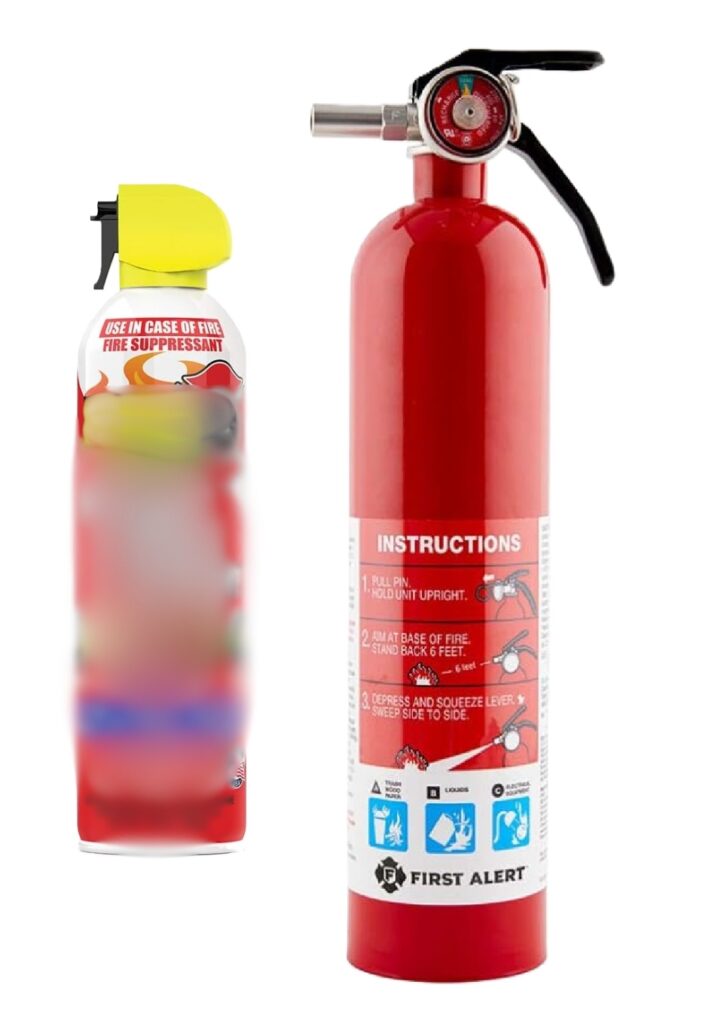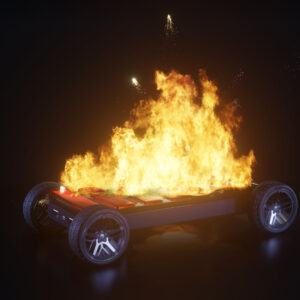While it isn’t a legal necessity, carrying a fire extinguisher in your vehicle can prove to be a life-saving decision. Automotive accidents have a fair risk of fire, after all, given all the fuel and oil and other flammable fluids that can spill from a wreck. There’s also the risk of fires from your vehicle’s battery and other engine bay components. While a car fire extinguisher might never be necessary, the last thing you want is to need one and not have it on hand when you do.
Why Keep a Car Fire Extinguisher
While automotive fires aren’t very common, one in every eight reported fires still come from vehicles. For safety’s sake, it’s best to have a fire extinguisher close at hand if the worst should happen. With how fast car fires spread as well, a fire extinguisher can help minimize damage and put the fire out as soon as possible. It’ll also give you some peace of mind while on the road. Traveling with a fire extinguisher will always be safer than traveling without one.
Choosing a Car Fire Extinguisher
When choosing a car fire extinguisher, there are a few things to keep in mind. You can’t just pick up any old extinguisher online, after all. What if it’s too big? What if it isn’t the right type for common car fires? What if it doesn’t even work? Consider these features when determining exactly what type of fire extinguisher you should have in your vehicle:
Size and Capacity
While it’s true that the larger the fire extinguisher, the bigger the fire it can put out, carrying around a massive, heavy fire extinguisher in your vehicle would hardly be convenient.

The smallest fire extinguishers usually have around one pound of capacity. They’re small enough to not be inconvenient, but we recommend a 2.5-pound model instead.
These are small enough to mount to the vehicle’s front seat or in the passenger footwell, and they can fit easily in the trunk if they hinder movement in the cabin. The largest size of fire extinguisher that would reasonably fit in a vehicle would likely be a 5-pound model. Those can reach about 15 inches tall, which borders on cumbersome inside the cabin.
Automotive fire extinguishers naturally have limited capacity since you want them to be relatively portable. They’re best for stopping small fires before they get worse.
Type
There are five fire extinguisher types, each of which is made for different fire types.
- Class A – Used for ordinary materials like cloth, paper, and wood
- Class B – Used for flammable, combustible liquids like oil, grease, and gasoline
- Class C – For electrical fires from appliances and other outlet-plugged equipment
- Class D – Used for flammable metals like potassium, magnesium, and sodium
- Class K – Used for vegetable oils, fats, and animal oils in cooking appliances
Fire extinguishers carry different letters to indicate what fire types they can handle. Most will cover the most common fire types, and most automotive fire extinguishers are either ABC or BC types. ABC fire extinguishers are more versatile.
Reusability
Automotive fire extinguishers can be either rechargeable or disposable. Rechargeable fire extinguishers can be refilled, making them the better choice. Fire extinguishers need some maintenance over time, as we’ll discuss later in this article. Having one that can be refilled saves you from buying a whole new one every few years.
Certification
You should always look for fire extinguishers labelled “UL Listed” or “ULC Listed.” These labels indicate that a nationally recognized testing laboratory has ensured that that fire extinguisher is certified for use. UL-listed fire extinguishers go through different tests to make sure they’ll perform well and safely in the harsh environments around a fire. This certification is how you can ensure the extinguisher you buy will be a help, not a hindrance, in case of an automotive fire.
Maintaining Your Car Fire Extinguisher
Fire extinguisher maintenance should be conducted regularly. An annual inspection by a qualified technician is best. They’ll perform pressure tests and replace damaged or worn parts when needed. These technicians can also take pressure gauge readings. Foam and powder extinguishers need an extended service with discharging and refilling every 5 to 10 years or so.
Where To Mount a Car Fire Extinguisher
The best place to mount a car fire extinguisher is beneath the passenger seat. This way, the driver has easy access to it in an emergency. If it can’t go beneath the passenger seat, it can also go in the trunk, but this is much more difficult to reach. Third-party mounting brackets are available and can be easily installed to keep the extinguisher from moving while you drive.
How To Use a Car Fire Extinguisher
Now that you know you can keep a fire extinguisher in your car for emergencies, you should know how to use it. Use the PASS method when using a fire extinguisher:
- P – Pull the pin and hold the extinguisher with the nozzle pointing away. Release the locking mechanism.
- A – Aim low and point the extinguisher at the base of the fire.
- S – Squeeze the lever both evenly and slowly.
- S – Sweep the nozzle side to side.
It’s a simple process to remember and relatively easy to do. Having a fire extinguisher in your car might seem excessive to some, but it’s a small price to pay for safety should you find that the worst has happened.
Any information provided on this Website is for informational purposes only and is not intended to replace consultation with a professional mechanic. The accuracy and timeliness of the information may change from the time of publication.




















